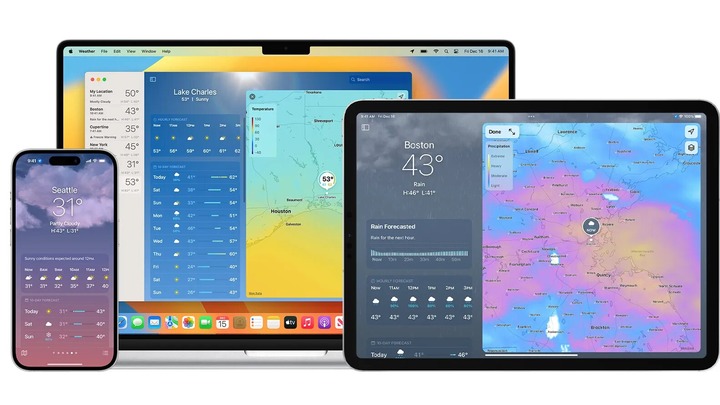The well-known weather application Dark Sky has been officially discontinued by Apple. The Cupertino-based tech giant bought Dark Sky in April 2020. The company removed the weather app from the App Store in September 2020, and all of its users have since been unable to use it.

Following its acquisition, Apple quickly discontinued the Wear OS and Android versions of Dark Sky and announced it would no longer accept registrations for Dark Sky’s API, which had given access to the company’s database of weather predictions and historical weather data to third-party app developers.
Later, it announced that the iOS application would be discontinued at the same time as the API service, postponing its closure only until the end of 2022.
The Weather app that comes pre-installed on iPhone, iPad, and Mac devices now contains a number of Dark Sky’s features thanks to Apple’s acquisition of the company in 2020. The Dark Sky components have been incorporated into Apple Weather.
For the current location, Apple Weather offers hyperlocal forecasts, notifications, high-resolution radar, hourly weather predictions for the upcoming 10 days, and next-hour precipitation.
Precipitation, quality of air, and temperature are just a few of the overlays that are available for the maps; to switch between them, tap on the bottom button on the top-right side of the map view.
Apple boasts that several of Dark Sky’s capabilities “have been integrated into Apple Weather” in the support guide. The remainder of the support guide is devoted to instructing Dark Sky users on how to use the Apple Weather app’s capabilities and interface.
Apple explains the app’s functionality in detail, including how to utilize the maps, handle notifications, and more. Despite Apple’s assurances, some customers aren’t sure Apple Weather is a good alternative to Dark Sky. Several Dark Sky users claim that Apple Weather still lags behind Dark Sky in a recent Reddit thread.
Recent sources claim that Apple is working on new iPad Pro variants. According to MacRumours, the two new OLED iPad Pro models should start selling within the first quarter of 2024.
The corporation intends to launch the new iPad Mini concurrently with the new iPad Pro models in early 2024, the source added. If that the story is true, Apple will for the first time increase the screen size of iPad Pro models.
It is believed that the company may reduce the bezel size in order to achieve the aforementioned screen size. Apple updated its 11-inch and 12.3-inch iPad Pro models in October 2022 by giving them the most recent M2 CPU.
Since the release of iOS 16, Apple has also made its WeatherKit subscriptions available. The company noted that developers can now access this weather information in apps created for iOS 16, iPadOS 16, macOS 13, tvOS 16, and watchOS 9 using a platform-specific Swift API and for other portals using a REST API.
According to the corporation, developers can use the Account tab in the Apple Developer app to upgrade for additional calls or downgrade at any time.

I am a law graduate from NLU Lucknow. I have a flair for creative writing and hence in my free time work as a freelance content writer.